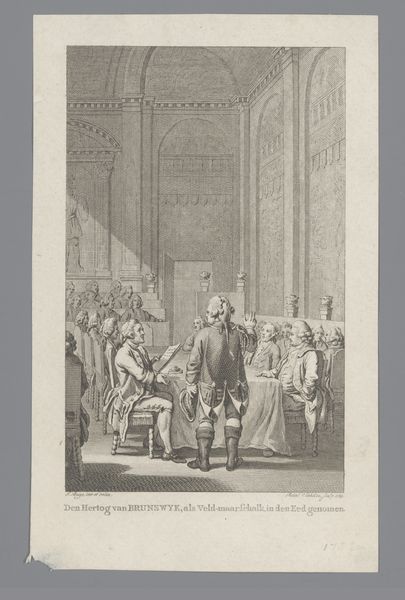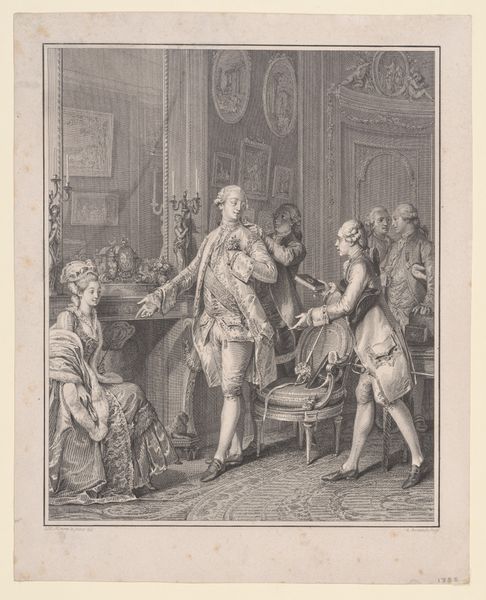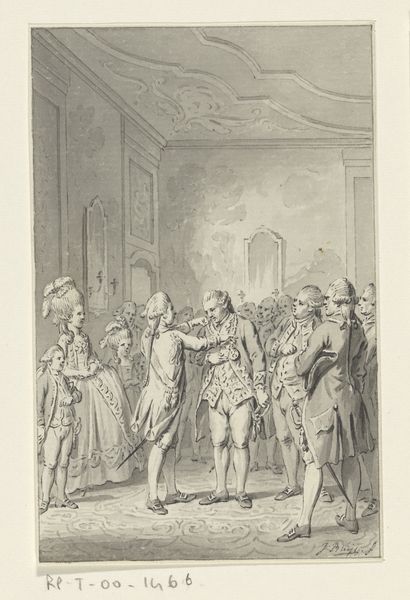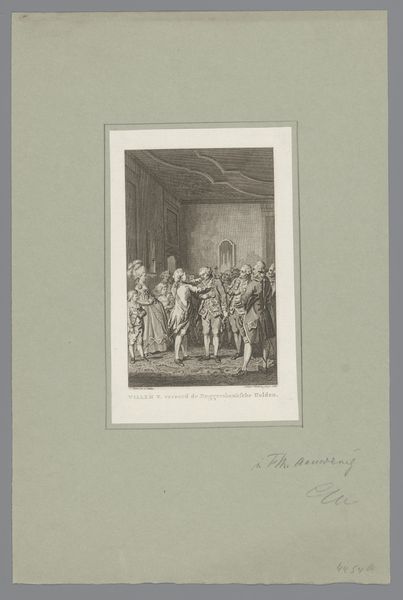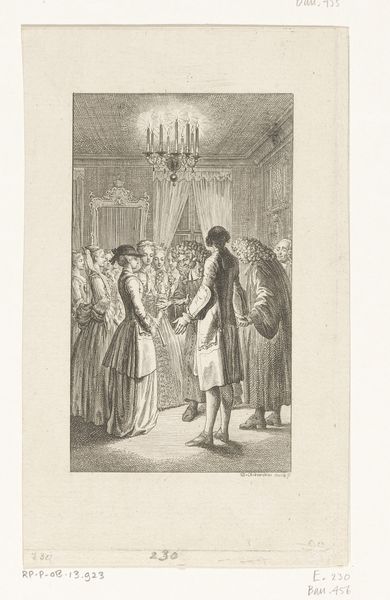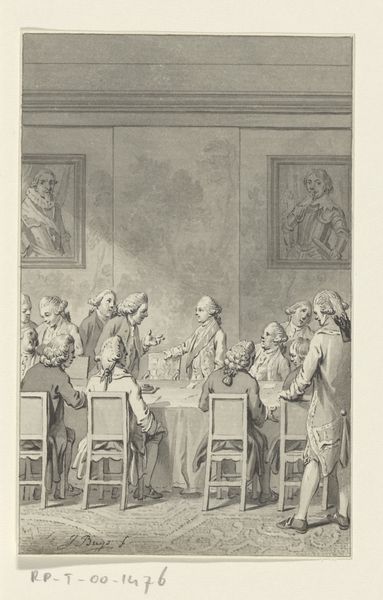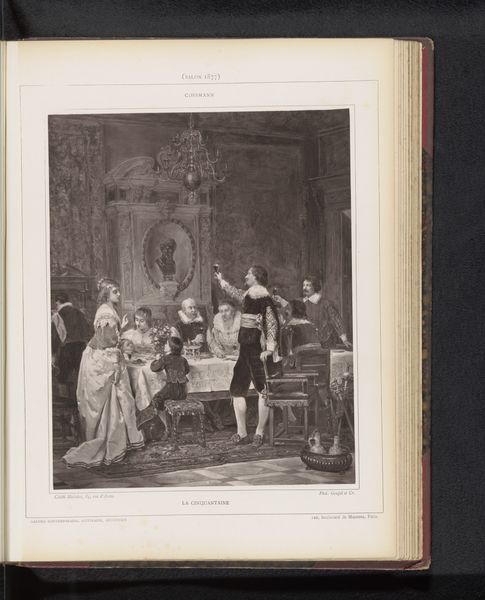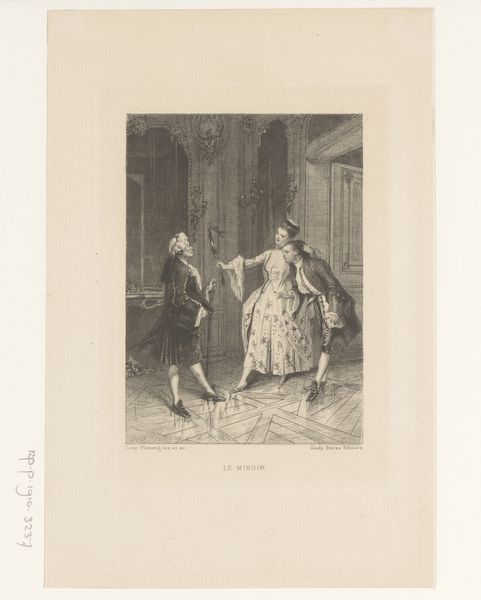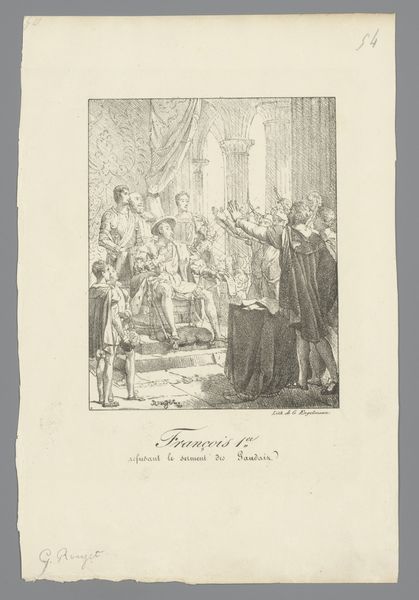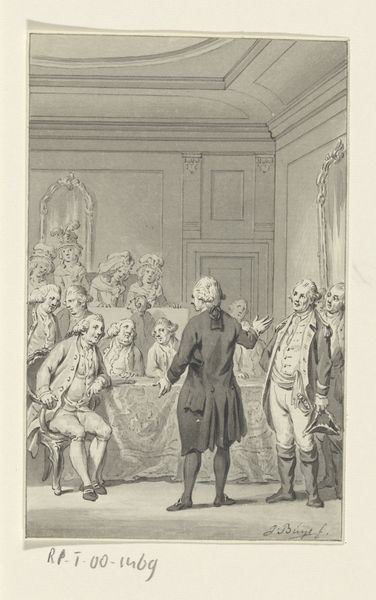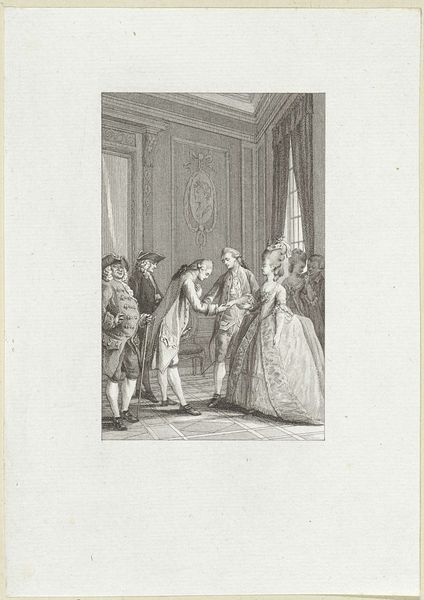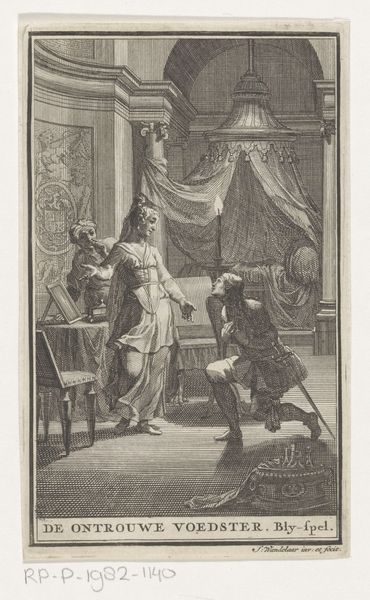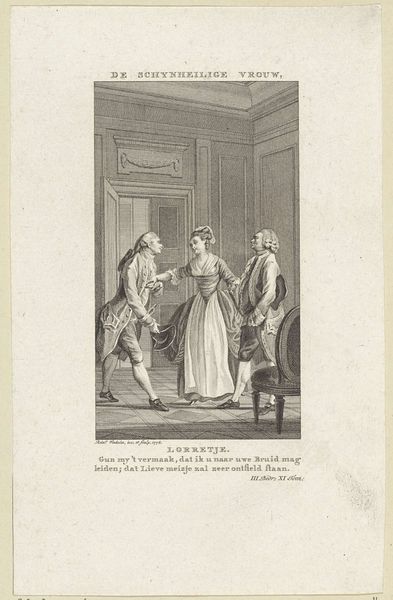
Hollandse kooplieden overhandigen prinses Anna een klaagschrift over de Engelse aanvallen, 1758 1788
0:00
0:00
Dimensions: height 156 mm, width 95 mm
Copyright: Rijks Museum: Open Domain
Reinier Vinkeles created this etching in 1758, and it shows Dutch merchants presenting Princess Anna with a grievance regarding English attacks. The magic here is in the medium itself: etching. The artist would have coated a metal plate, likely copper, with a waxy ground. Using a sharp needle, he’d then draw through this ground, exposing the metal. When immersed in acid, the drawn lines would be etched into the plate. This painstaking process yields the fine, precise lines we see here, capturing the details of the merchant's garments and the ornate room in which they meet. The social context of this work is key. Etchings like this were relatively inexpensive to produce, making them accessible to a wide audience. So, while the subject is a meeting between elites, the image itself could circulate among a broader public, spreading awareness – and perhaps stoking resentment – about the economic tensions of the time. It reminds us that art is not just about what is depicted, but also about how it is made, and for whom.
Comments
No comments
Be the first to comment and join the conversation on the ultimate creative platform.
